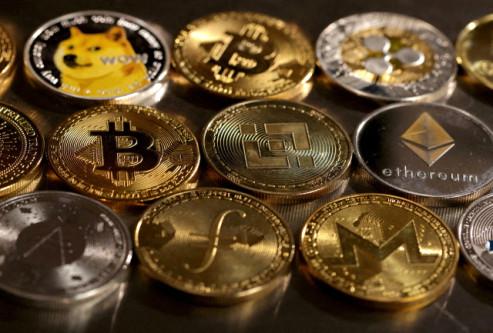Interest rate cut uncertain despite US inflation easing... Cryptocurrency sluggish due to government bond and tariff anxiety
This article is machine translated
Show original
In March, the U.S. inflation rate significantly slowed down, reigniting expectations of a Federal Reserve rate cut. However, experts analyzed that bond sell-offs and U.S.-China trade conflicts continue to add uncertainty to the financial markets.
According to TheBlock on the 11th (local time), the U.S. Bureau of Labor Statistics' Consumer Price Index (CPI) and Producer Price Index (PPI) for March both showed signs of easing, raising the possibility of a Federal Reserve rate cut next month. BRN analyst Valentin Fournier noted in a report that "rate cuts and financial condition easing could provide a positive foundation for both Bitcoin and traditional assets."
Bitcoin traded around $82,300 after the announcement, partially recovering its decline, but the overall digital asset market rose only slightly below 1%. Ethereum and Solana repeated intraday fluctuations, while Bitcoin spot ETFs experienced six consecutive days of net outflows. Fournier analyzed that "ETF fund outflows indicate difficulty in maintaining short-term bullish momentum." However, he stated that "a combination of factors such as inflation slowdown, potential tariff peaks, and the inauguration of pro-cryptocurrency SEC Chair Paul Atkins could induce capital inflows into the digital asset market."
Macroeconomic risks remain prominent. Douro Labs CEO Mike Cahill warned that "low inflation figures alongside signs of bond market collapse signal structural imbalance," adding that "this represents systemic stress rather than a simple economic adjustment." The 10-year U.S. Treasury yield exceeded 4.5%, with simultaneous bond price declines and investor confidence erosion.
Amberdata Research Director Mike Marshall analyzed that "the U.S. temporary tariff suspension has limited effect, and trade conflicts with China are actually intensifying." The U.S. has raised tariffs on Chinese imports up to 145%, with China responding with 125%, reigniting trade tensions.
Cahill projected that this situation could be advantageous for the cryptocurrency market in the long term. He suggested that "capital centered on traditional bond markets will gradually shift to digital assets with practical utility and programmable stability," potentially opening a new phase of capital circulation.

Source
Disclaimer: The content above is only the author's opinion which does not represent any position of Followin, and is not intended as, and shall not be understood or construed as, investment advice from Followin.
Like
Add to Favorites
Comments
Share
Relevant content





